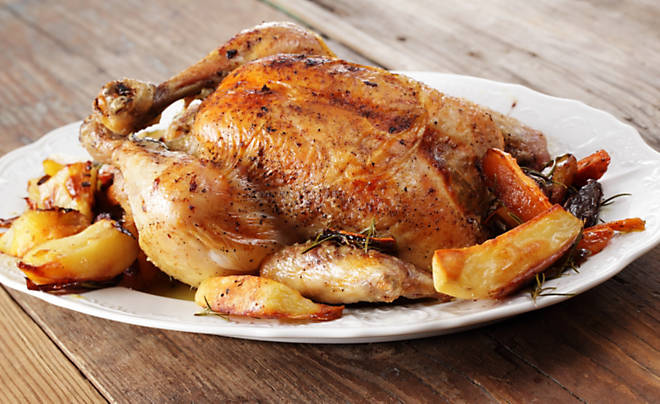If a grand entrance with a turkey straight out of a Norman Rockwell painting is not part of your Thanksgiving ritual, you can cut cooking time substantially by butterflying the bird. This is an especially good method if you prefer to bring platters of carved meat to the table, or are setting a buffet.
Spatchcocking, or butterflying, a turkey is a process that removes the backbone, flattening the bird and allowing for more even and rapid roasting. This method is great for chicken, too. Be aware: you will need sharp kitchen shears and a good knife to spatchcock a turkey.

Searing for Juicy Goodness
This method of roasting uses broiler heat to sear and brown the skin, sealing in the meat’s juices. You start by laying out the butterflied bird, skin side down in a shallow roasting pan, basting it generously with melted duck fat, and then position the bird so it’s 7 or 8 inches from the preheated element.
Broiling uses intense heat; if your oven has only one broiler setting that temperature is likely a whopping 550°F. If you can thermostatically control your broiler, set the temperature between 350°F and 400°F. You want to slowly sear, for about 16 to 18 minutes on the first side; adjust the heat accordingly. Watch the bird carefully, and baste frequently during this process.
Once the meat has browned nicely, take it out of the oven to season with salt, and turn the bird skin side up. Baste the skin and place the turkey back under the broiler. The skin side can burn easily, so continued vigilance and basting is required. This side will be under the broiler for about 10 to 12 minutes, give or take. This is really about browning, not a desired degree of doneness, so it is more of a visual judgment than precise timing.

Slow Roasted Finish
Once the skin has browned lightly, remove the bird from beneath the broiler, turn it off and lower the temperature in the oven to 350°F.
Unlike roasting an intact bird, place the butterflied turkey in the middle level of the oven. You will still want to baste every 20 minutes or so for the duration of the roasting time. Use the melted duck fat until the bird produces enough of its own pan drippings for basting. Using this method, a 15-pound turkey should only take about 1-1/2 to 2 hours to finish cooking. Ultimately, you want an internal temperature of 165°F.
QUICK TIPS
1) A 14 to 18 pound turkey is a good size for most average ovens and standard roasting pans. You can cook larger turkeys with this method if you have an oven and roasting pan to accommodate it.
2) Clip the tip of the little nub at the ‘elbow’ of the wing because otherwise, it will likely char.
3) If the bird has browned to your liking before being thoroughly cooked, cover it loosely with a sheet of aluminum foil (shiny side up). Continue basting as usual.

I live alone so a whole turkey is too large for me. What I will do, instead of spatchcocking my bird, I will split the turkey, remove the backbone and roast a half and freeze a half. (I often do this with chickens as well)
This is a great idea! We hope you enjoy your turkey dinner.